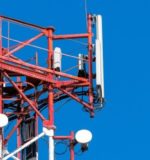Earlier this year the Belgian government halted a 5G test over radiation concerns. Switzerland is monitoring risks posed by the 5G network. A member of the UK House of Commons warned the parliament of the “unintended consequences” of the 5G upgrade.
5G fears have become mainstream. But their point of origin is anything but.
If you go digging into the claims behind these fears, you’ll discover some truly wild conspiracy theories. Some people claim that 5G is in the same wavelengths as weapons. Or that it’s being used by the military to break the enemy’s spirit.
People have argued that the smaller wavelengths used in each new generation of mobile phone infrastructure have never been tested, and therefore we are guinea pigs for this technological experiment. By and large, claims about the harms of 5G are not far from gay frog conspiracies.
You’ll be happy to know that none of those claims are true.
“The wavelengths that 5G uses and will use are all entirely safe and have been in research and testing for decades,” Howard Jones, the head of technology communications at UK’s mobile network provider EE, recently explained to The Guardian.
“It’s a red herring to say it’s a new technology and therefore hasn’t been tested.”
There’s an awful amount of terror out there over a phone network. Chances are many people couldn’t explain what 5G even is, so here’s a brief overview of the actual technology.
When you use your phone, it interacts with a phone tower nearby, via radio waves. The phone tower then connects (also via radio waves) to a core network, which then passes on the information it receives and sends information back.
Currently, if your phone uses 4G, the frequency band of the radio waves it employs is anywhere from 2 – 8 GHz. This is a slightly higher frequency than 1.8 – 2.5 GHz for 3G (and can be slightly different, depending on your region).
Using higher frequencies has both advantages and disadvantages. The higher the frequency of a radio wave, the shorter the wave itself. Similarly to sound waves, shorter waves lose energy faster as they move, so they cover less distance.
The area covered by the phone tower – also known as a base station – is called a ‘cell’, and these are usually around 1 to 20 kilometres wide, although they can be a lot smaller, depending on how many phones there are in the area.
At weaker frequencies, one tower covers less area, therefore you need more towers. However, shorter waves also mean that many more devices can be connected to one phone tower at once. 5G potentially offers network connection speeds that will be substantially higher than what’s currently available.
One of the reasons people are so worried about 5G, is that the new network can support frequencies of up to 300 GHz, although the various countries where it’s being rolled out will cap the frequencies differently.
These higher frequencies are called ‘millimetre wavelengths’, because they are between 1 and 10 millimetres in width. Shorter waves with their larger energy might seem dangerous at face value, but there’s no basis for these concerns.
“Higher frequency doesn’t mean higher intensity: it’s really like comparing blue with red light – it’s a different wavelength,” Andrew Wood, an electromagnetic bioeffects researcher from Swinburne University in Australia, told ScienceAlert.
“For 5G’s 26 GHz the radio wave is absorbed in the outer layers of the skin rather than getting into the brain tissue. There are nerve endings in the skin which would warn of any over-exposure.”
Wood, as part of his research, is using advanced computer modelling to predict the absorption of radio frequency in various parts of the skin.
Because shorter wavelengths don’t penetrate like longer ones, it also means 5G phone towers need to be placed closer together, something which doesn’t impress those already nervous about the ubiquitous presence of radio waves in our environment.
“Another significant change for 5G will be to centralise much of the processing that in the past was carried out at the base station. Dealing with the high density of devices and doing sophisticated processing requires a great deal of computing power,” explains Philip Branch from Swinburne University of Technology for The Conversation.
“Rather than having each base station doing it, the raw data will be transmitted to a central location and be processed there.”
So, why are people so scared? Fears of electromagnetic radiation are nothing new; the most simple explanation is that the promise of a 5G rollout is just bringing up the same old technology concerns people have had for decades – just dressed up in a new guise.
“The exposure levels for the general public will be well below the limits set by ICNIRP, the international review agency linked to WHO,” says Wood.
“The prevalence of phone handsets has gone from zero in the early 80s to over 90 percent of the Australian population now, without an appreciable change in brain cancer rates.”
But experts have noted that maybe, just maybe there is one source we can blame for this uptick in 5G phobia: Russia.
“There’s a theory around that the Russians want to slow the 5G roll-out in the West, to enable their technology to catch up,” says Wood.
We seriously couldn’t make this stuff up if we wanted to.








 Photographer Finds Locations Of 1960s Postcards To See How They Look Today, And The Difference Is Unbelievable
Photographer Finds Locations Of 1960s Postcards To See How They Look Today, And The Difference Is Unbelievable  Hij zet 3 IKEA kastjes tegen elkaar aan en maakt dit voor zijn vrouw…Wat een gaaf resultaat!!
Hij zet 3 IKEA kastjes tegen elkaar aan en maakt dit voor zijn vrouw…Wat een gaaf resultaat!!  Scientists Discover 512-Year-Old Shark, Which Would Be The Oldest Living Vertebrate On The Planet
Scientists Discover 512-Year-Old Shark, Which Would Be The Oldest Living Vertebrate On The Planet  Hus til salg er kun 22 kvadratmeter – men vent til du ser det indvendigt
Hus til salg er kun 22 kvadratmeter – men vent til du ser det indvendigt  Superknepet – så blir snuskiga ugnsformen som ny igen!
Superknepet – så blir snuskiga ugnsformen som ny igen!  Meteorite That Recently Fell in Somalia Turns Out to Contain Two Minerals Never Before Seen on Earth
Meteorite That Recently Fell in Somalia Turns Out to Contain Two Minerals Never Before Seen on Earth  Nearly Frozen Waves Captured On Camera By Nantucket Photographer
Nearly Frozen Waves Captured On Camera By Nantucket Photographer  It’s Official: Astronomers Have Discovered another Earth
It’s Official: Astronomers Have Discovered another Earth 